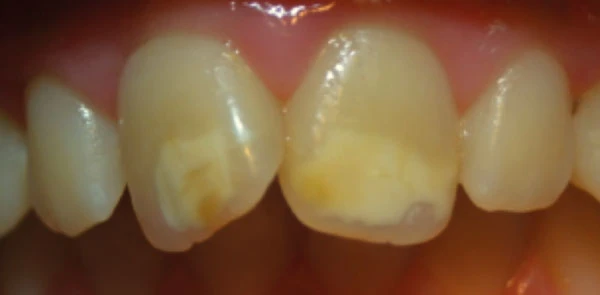Molar incisor hypomineralisation (MIH)
Question and Answer Session with world expert : Professor Ferrenti Wong
Professor Ferranti Wong is professor of paediatric dentistry at Queen Mary University of London
Question: What is MIH?
Molar incisor hypomineralisation (MIH) is a well-recognised qualitative dental defect described as a disturbance of enamel-forming cells causing defects of mineral deposition (hypomineralisation). It is localised and affects the permanent incisors and first molars only. The main characteristics are brown/white discoloration in mild to moderate cases, with teeth breaking down and crumbling in more severe MIH. Due to the weakened enamel, people with MIH are also at high risk from caries.
Question : How common is MIH?
We’ve only been seeing it widely over the last 15-20 years. First described in Sweden in 1987 it seems to have become increasingly common. It has a reported global prevalence of 12.9% but according to the German Society for Dental, Oral and Maxillofacial Medicine, it could be higher – affecting about 10-15% of all primary school children and almost 30% of 12-year-old children in Germany in 2018 – a figure which now exceeds that of caries in this age group.
Question: What are the main symptoms?
Brown/white discoloration are the first signs in mild cases, with enamel breakdown in more severe MIH. Associated problems include:
- Hypersensitivity
- Difficulty gaining adequate anaesthesia
- Atypical carious lesions
- Post-eruptive breakdown
- Reduction in resin bond strength
- Aesthetic concerns
- Reduction in quality of life

Question: What causes MIH?
The causes are still not fully understood, but it is thought that MIH might occur following an infection or trauma in the first year of life, when those particular teeth are being formed. The commonest of these are: measles, urinary tract infection, otitis media, gastric disorders, bronchitis, kidney diseases, pneumonia, asthma, fever, or antibiotic use. We now think there may also be a genetic or epigenetic component.
Question: How do you diagnose MIH?
By taking a detailed history, which can be difficult as most parents cannot recall back to events when their child was a baby. After ruling out fluorosis and other causes of discoloration or enamel breakdown, we are able to diagnose MIH.
Question: How do you manage the sensitivity associated with MIH?
Many patients are referred to our clinic by dentists who have recommended mainstream brands of sensitivity toothpaste without success. We have found that BioMin F is able to reduce sensitivity in these patients and I would like to see clinical trials to compare BioMin F with high fluoride treatments.
Question: How does BioMin F help in MIH?
It is believed that the defects in the enamel mineral create a channel through which the dentine is exposed to external stimuli, causing the sensitivity. We want to strengthen the enamel, by replenishing the mineral. This is where BioMin F comes in, creating an environment where calcium, phosphate and fluoride are released slowly and continuously over several hours, working with the saliva to form fluorapatite. This both remineralises the tooth enamel and blocks the open tubules to reduce sensitivity.
Question : What are the treatment options available in MIH?
A number of restorative treatments are available, such as resin-based fissure sealants, white composite restorations or crowns. Bleaching is carried out in some countries but is not permitted in the UK in children. We try to keep the treatment as conservative as possible, sometimes we might use a white composite on the front teeth, but not veneers.
What new products may soon be available which may be of value here?
I am very excited by the possibilities offered by new filling materials based on BioMin’s bioactive technology. These would not only fill the cavity, but by gradually releasing the active ingredients (calcium, phosphate and fluoride) would actively work to remineralise the area around it
